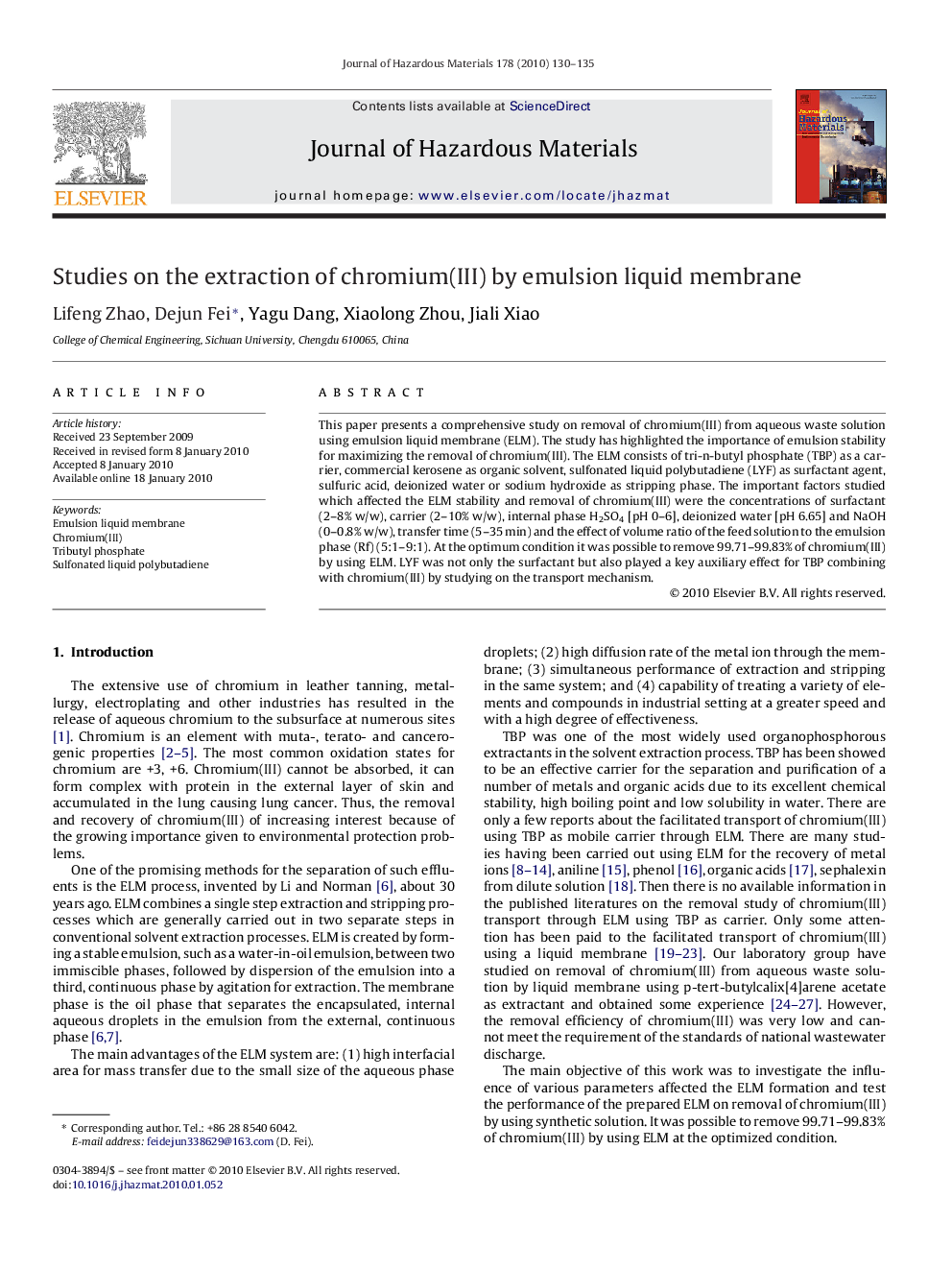| Article ID | Journal | Published Year | Pages | File Type |
|---|---|---|---|---|
| 580242 | Journal of Hazardous Materials | 2010 | 6 Pages |
Abstract
This paper presents a comprehensive study on removal of chromium(III) from aqueous waste solution using emulsion liquid membrane (ELM). The study has highlighted the importance of emulsion stability for maximizing the removal of chromium(III). The ELM consists of tri-n-butyl phosphate (TBP) as a carrier, commercial kerosene as organic solvent, sulfonated liquid polybutadiene (LYF) as surfactant agent, sulfuric acid, deionized water or sodium hydroxide as stripping phase. The important factors studied which affected the ELM stability and removal of chromium(III) were the concentrations of surfactant (2-8% w/w), carrier (2-10% w/w), internal phase H2SO4 [pH 0-6], deionized water [pH 6.65] and NaOH (0-0.8% w/w), transfer time (5-35Â min) and the effect of volume ratio of the feed solution to the emulsion phase (Rf) (5:1-9:1). At the optimum condition it was possible to remove 99.71-99.83% of chromium(III) by using ELM. LYF was not only the surfactant but also played a key auxiliary effect for TBP combining with chromium(III) by studying on the transport mechanism.
Related Topics
Physical Sciences and Engineering
Chemical Engineering
Chemical Health and Safety
Authors
Lifeng Zhao, Dejun Fei, Yagu Dang, Xiaolong Zhou, Jiali Xiao,
